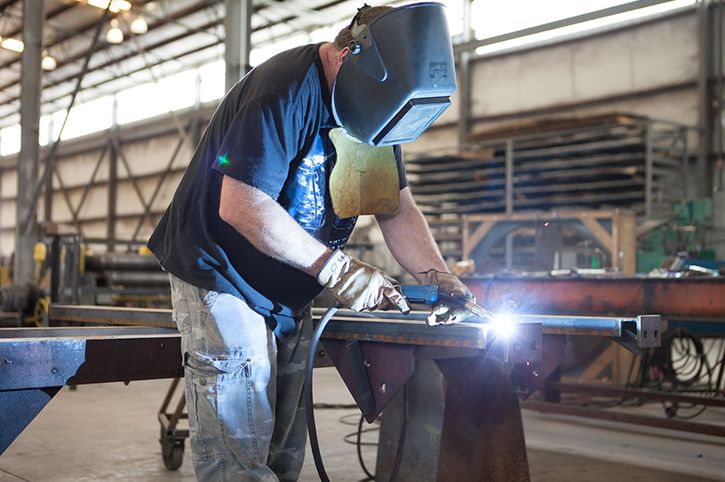The Ultimate Guide to Welding WPS Procedures: An Extensive Summary for Welders
In the intricate world of welding, Welding Procedure Specifications (WPS) offer as the backbone of making certain quality, uniformity, and safety and security in welding operations (welding WPS). As we dive into the various elements of a WPS and discover the intricacies of credentials and accreditation, we will certainly uncover the essential function these treatments play in the realm of welding.
Importance of WPS Procedures
Comprehending the importance of Welding Treatment Specifications (WPS) procedures is crucial for making certain the quality and integrity of bonded structures. WPS procedures act as a roadmap for welders, describing the required actions, specifications, and products called for to attain a sound weld. By sticking to WPS guidelines, welders can guarantee uniformity in their job, causing trusted and structurally sound welds.
One of the key reasons that WPS treatments are important is their function in maintaining weld quality and integrity. Adhering to the defined welding parameters and methods outlined in the WPS aids stop defects such as porosity, splitting, or incomplete combination, which can compromise the toughness and durability of the weld. Furthermore, WPS treatments are important for guaranteeing compliance with sector requirements and codes. By following recognized WPS standards, welders can show that their work meets the essential requirements for safety and security and high quality, supplying guarantee to customers, inspectors, and governing bodies. Essentially, the importance of WPS procedures can not be overstated, as they are basic to attaining regular, high-grade welds that meet industry requirements and specifications.

Components of a WPS
A Welding Procedure Spec (WPS) typically comprises crucial parts that detail the particular needs for performing a weld, making sure uniformity and top quality in the welding procedure. The key components of a WPS consist of essential variables such as base metals, filler metals, interpass and preheat temperatures, welding procedures, protecting gases, welding placements, and post-weld warm treatment demands.
Base steels refer to the materials being joined, while filler metals are used to load the void in between the base steels during welding. The welding process lays out the specific method to be made use of, whether it's gas steel arc welding (GMAW), protected metal arc welding (SMAW), or an additional technique. Welding placements define the positionings in which welding can be executed.

Certification and Accreditation
Having established the necessary elements of a Welding Treatment Spec (WPS), the emphasis now shifts in the direction of the critical elements of qualification and qualification in welding techniques.

Accreditation, on the other hand, is the official acknowledgment of a welder's credentials by an appropriate certification body or company. Welding accreditations are normally based upon the specific welding processes, products, and settings a welder is certified to deal with. Holding a legitimate welding accreditation shows that a welder satisfies industry requirements and is skilled to carry out welding tasks to the called for specs.
Creating a WPS
To develop a Welding Treatment Specification (WPS) that fulfills market criteria, careful consideration of welding processes, products, and operational parameters is crucial. The first step in creating a WPS is to identify the welding procedure to be utilized, such as gas steel arc welding (GMAW) or secured metal arc welding (SMAW)

Executing and Checking WPS
Upon settling the thorough Welding Treatment Spec (WPS) that carefully details welding procedures, materials, operational criteria, and quality assurance steps, the focus shifts to successfully executing and checking the well-known treatments. Implementation involves guaranteeing that all welders included in the task are familiar with Learn More the WPS and follow it meticulously during the welding process. This calls for providing appropriate training and supervision to assure adherence to the specified treatments. Keeping an eye on the WPS involves continual oversight to validate that welding tasks align with the recorded specs. Assessments, testing, and additional reading quality assurance procedures are necessary parts of the surveillance procedure to determine any type of issues or discrepancies quickly. Normal audits and reviews of the welding procedures aid in maintaining consistency and top quality throughout the job. Effective implementation and tracking of the WPS are essential for making sure the honesty, stamina, and safety of the welded joints, ultimately adding to the total success of the welding project.
Conclusion
To conclude, understanding and complying with Welding Procedure Specifications (WPS) is critical for welders to make certain high quality, uniformity, and security in their work. By knowing the components of a WPS, obtaining correct qualifications and qualifications, creating detailed treatments, and applying and checking them properly, welders can enhance their skills and efficiency in welding practices. Adhering to WPS procedures is necessary for producing high-grade welds and meeting industry requirements.
In the complex globe of welding, Welding Procedure Requirements (WPS) serve as the backbone of ensuring quality, consistency, and safety in welding operations. The welding procedure details the certain technique to be utilized, whether it's gas steel arc welding (GMAW), shielded steel arc welding (SMAW), or another approach.To create a Welding Treatment Specification (WPS) that meets industry requirements, cautious factor to consider of welding procedures, materials, and functional specifications is vital. The very first step in developing a WPS is to identify the welding process to be made use of, such as gas metal arc welding (GMAW) or protected steel arc welding (SMAW)Upon wrapping up the extensive Welding Treatment Specification (WPS) that meticulously information welding procedures, materials, functional parameters, and top quality assurance steps, the emphasis moves to successfully implementing and keeping an eye on the established treatments.